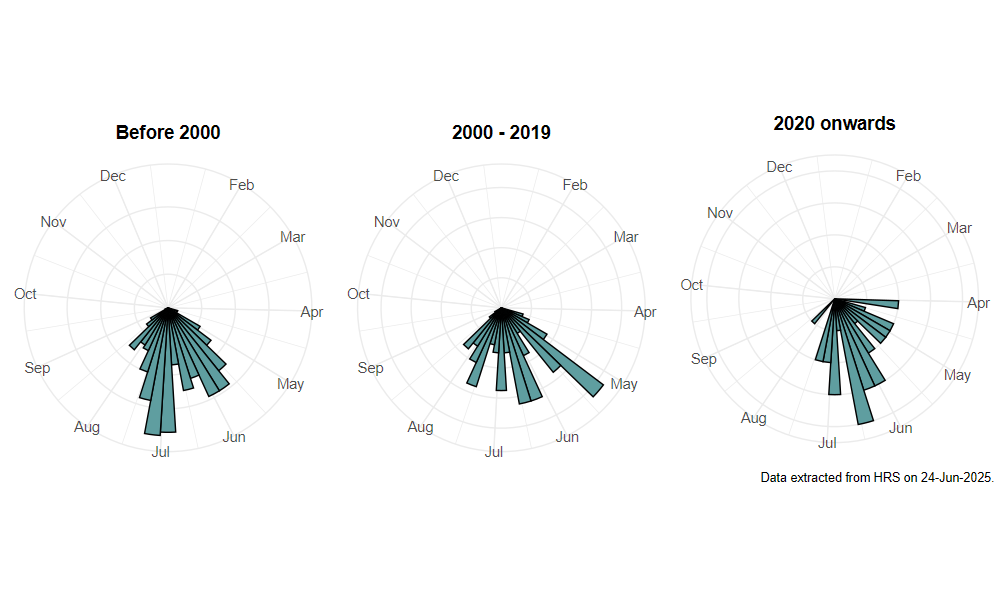Anasimyia transfuga (Linnaeus, 1758)
Identification
Identification difficulty = 4. ![]()
![]() according to Ball & Morris, 20241
according to Ball & Morris, 20241
Synonymy
This species was confused with A. contracta before the review by Claussen & Torp (1980)2; older records are therefore suspect unless a specimen has been re-examined.
Biology
Confusion with A. contracta, means that it is not certain to which species larval descriptions under this name in earlier literature apply. Adults are found in wetland margins where decaying vegetation is abundant, and tall emergent vegetation such as Sea Club Rush Scirpus maritimus, Branched Bur-reed Sparganium erectum or Reed Sweet Grass Glyceria maxima occurs. This species will tolerate smaller and more shaded water bodies than those typically favoured by other members of the genus, occurring for example in ditches beside woodland rides.
Flight period
The following plots show the number of unique records per week that were not reported to be of eggs, larvae or pupae.

Distribution
Most records are southern and there are very few recent records north of Kendal. This is a lowland species that is most likely to be encountered in coastal marshes and wet river valleys.

Trends
The following plots show the Frescalo TFactor vs year and a map of the rescaled frequency (all records) for the species. For an explanation see here.

-
Ball, S., & Morris, R. (2024). Hoverflies of Britain and Ireland. WILDGuides (3rd ed.). Oxford: Princeton University Press. ↩
-
Claussen, C., & Torp, E. (1980). Untersuchungen uber vier europaische Arten der Gattung Anasimyia Schiner, 1864 (Insecta, Diptera, Syrphidae). Mitt. zool. Mus. Univ. Kiel., 1(4), 1–11. ↩